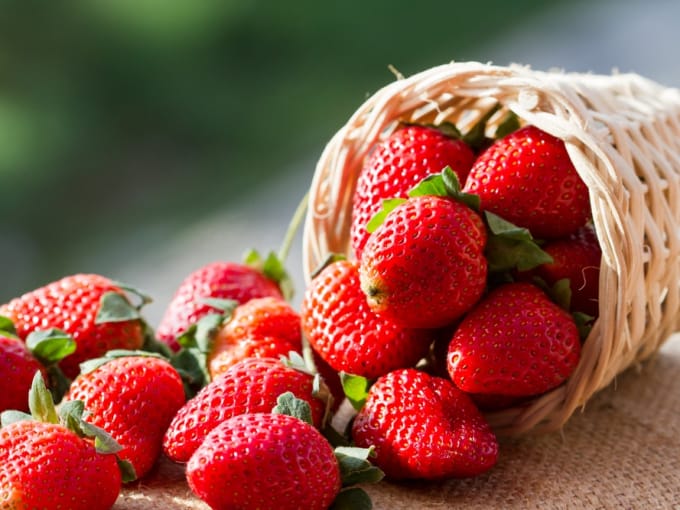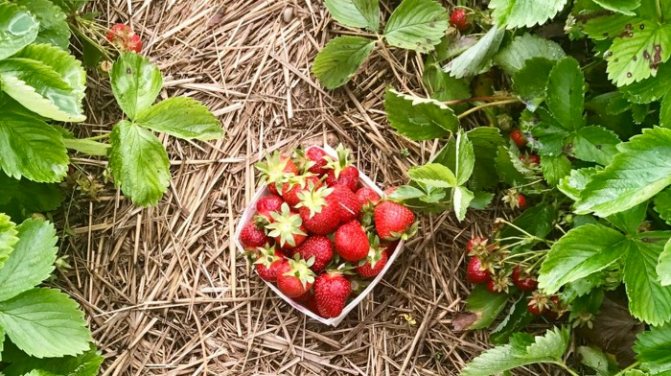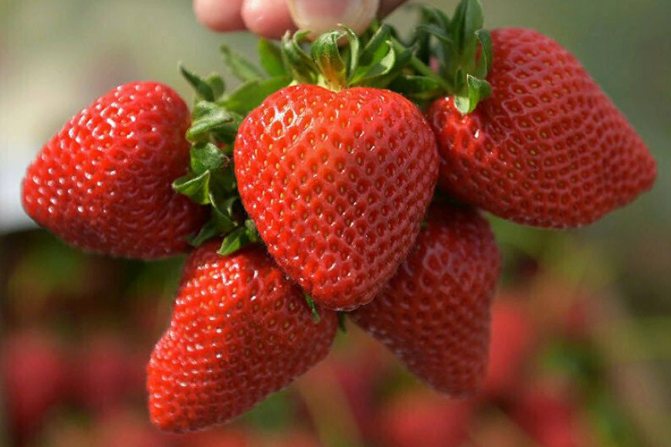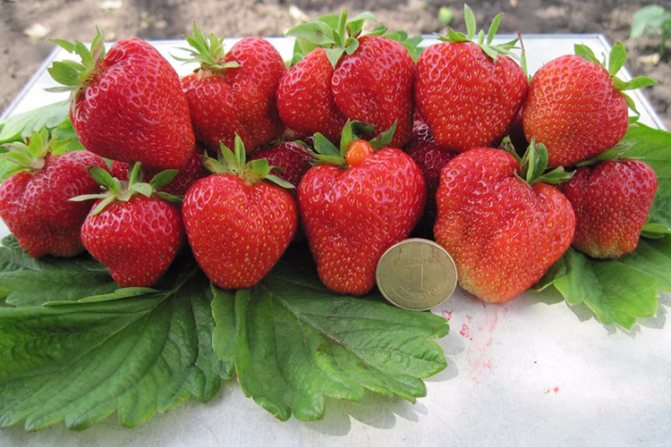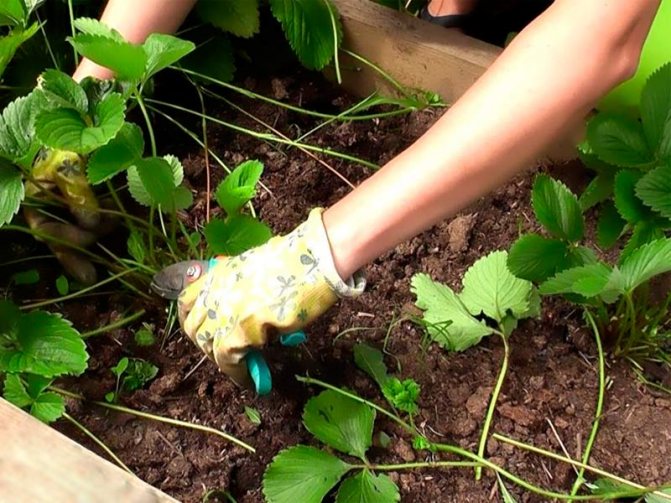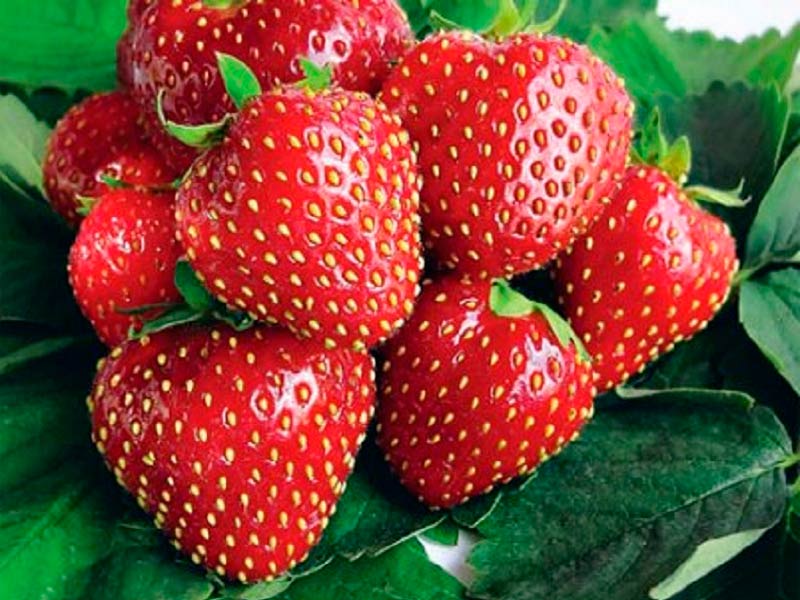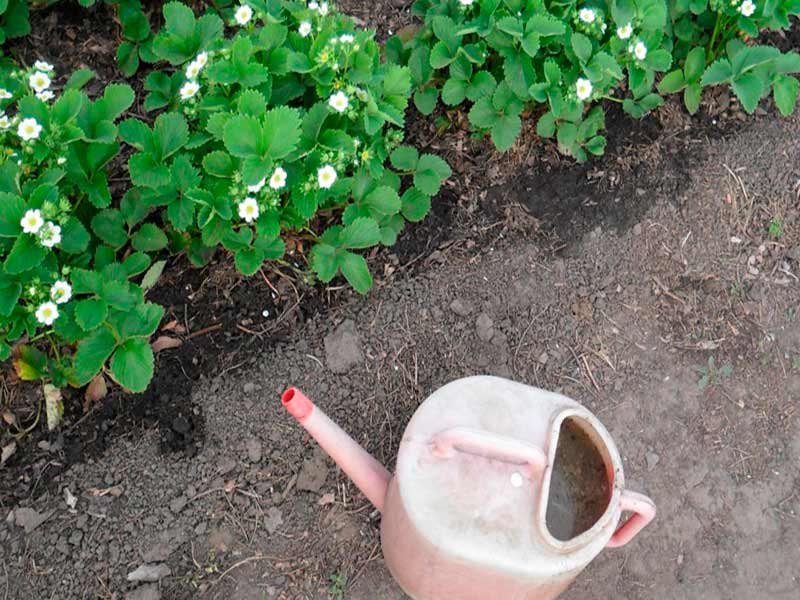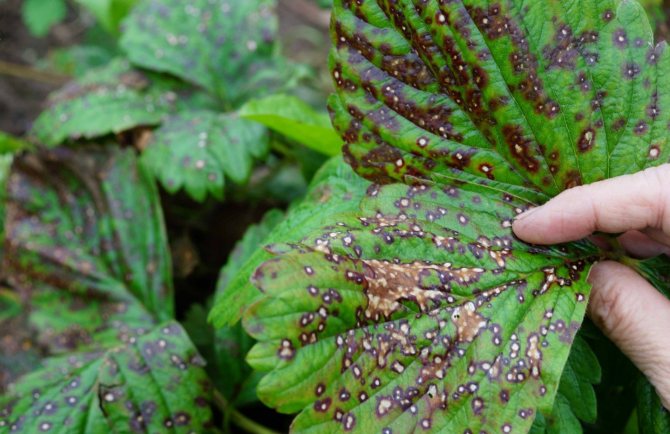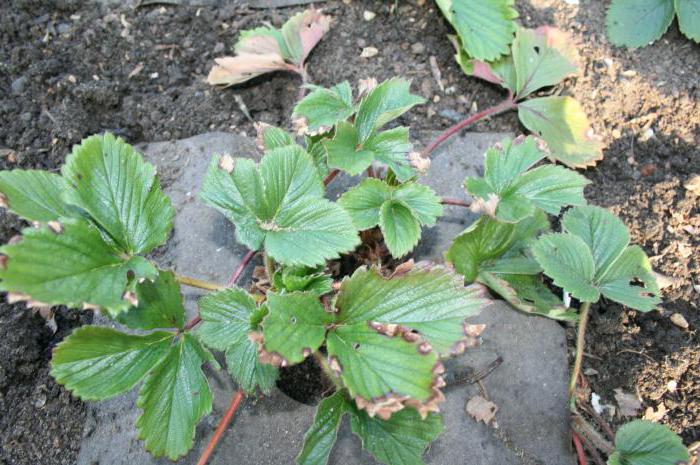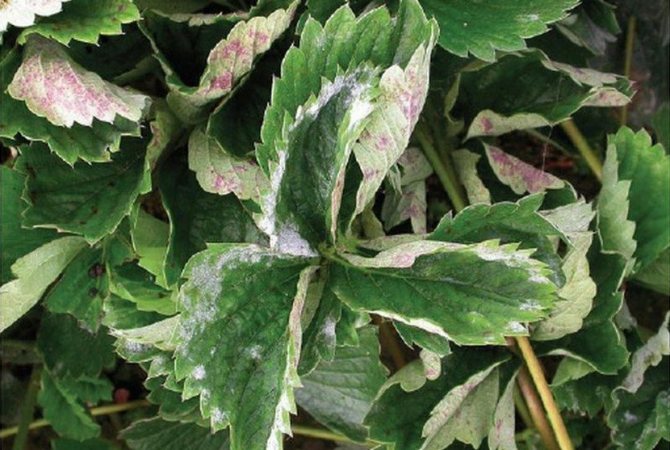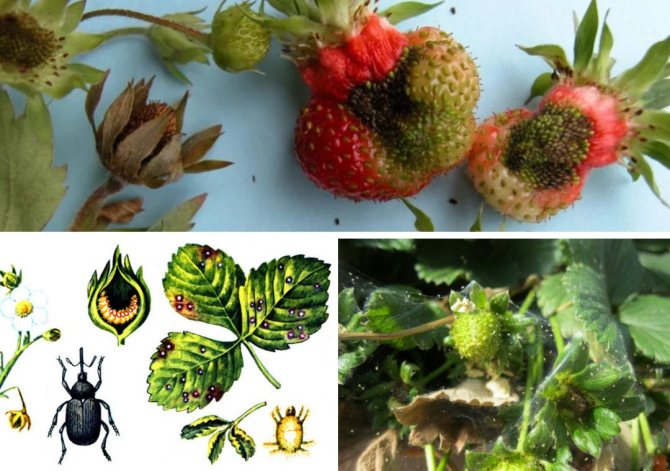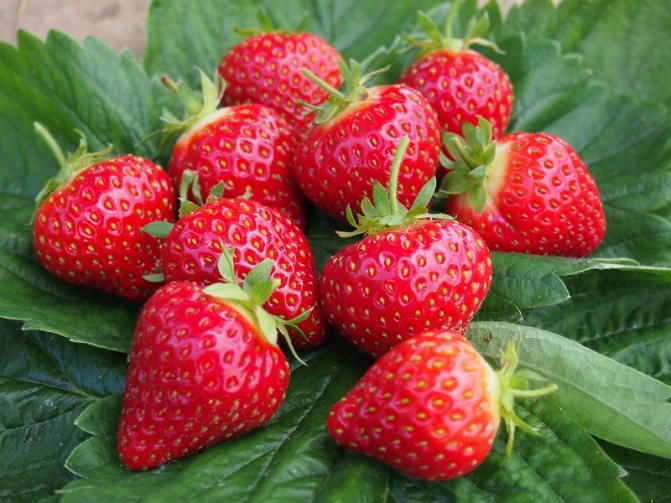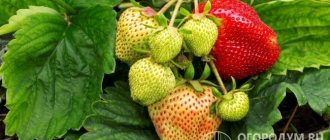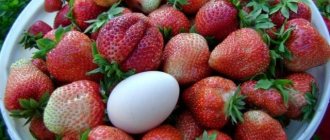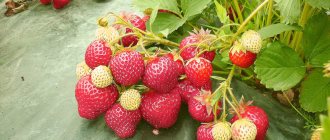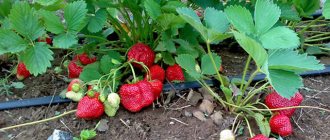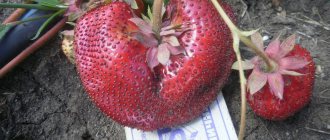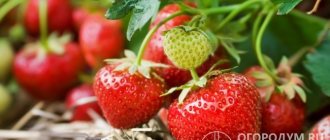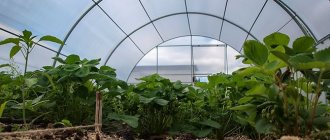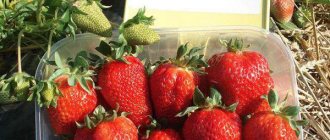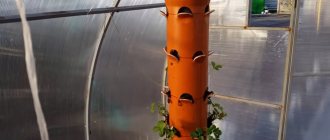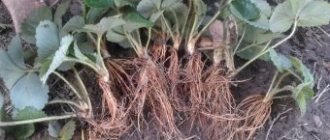With the onset of spring, we crave sunshine, tasty and healthy vegetables, fruits and berries. They help us to fill the body with vitamins, to revive again. We can get high-quality and healthy fruits in the country, and we all know that strawberries please us quite early with their delicious harvest. We are always looking forward to summer to feast on berries. Want to speed up the process and get benefits sooner than ever? Then you need to choose an early variety such as the Kimberly strawberry. She will delight with vitamins at the beginning of summer.
Kimberly strawberry variety description
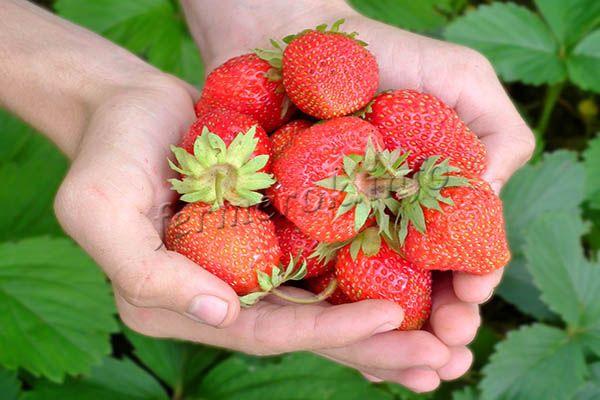
Berries weighing 20-35 g, but can reach a weight of 50 g
Kimberly strawberries have an early ripening period. Fruiting is always amicable, one-time (the variety is not remontant) and lasts no more than 3 weeks. The productive cycle of the bush is 3-5 years. If you keep it in the garden for longer, it will practically not yield a crop.
The plant is medium in height, with spreading leaves. Whiskers are medium in size, thick, green or red in color. The leaves are large, deep green in color with wide denticles along the edge and a shiny front side. Flowers are bisexual, white, large. There is a lot of pollen in them, so there are no problems with pollination.
Interesting!
To get the strawberry harvest a week earlier, it is necessary to cover it in early spring using a light spunbond, and when the bushes begin to rise, raise the protective cover so that it does not press on the leaves, but not completely remove. They remove the protection when it is already warm enough outside.
The strawberry has a conical shape, there is no neck. Berries weighing 20-35 g, but the first strawberry in the season is usually the largest and can reach a weight of 50 g. The color of the superficial glossy skin is scarlet, sometimes orange-red. The flesh is red in the cut, maybe with an orange tint. It is dense, there are no voids inside. The number of seeds is average yellow.
Reproduction of Kimberly garden strawberries
Kimberly strawberries can be propagated by tendrils or seeds.
Antennae
- When the rosette, located on the tendril closest to the mother plant, is sufficiently developed, pin it to the ground, and cut off the rest of the tendril.
It is recommended to use only the first rosette for reproduction, the rest usually die or give a poor harvest.
- By August, when the rosettes are sufficiently rooted, separate the seedlings from the mother bush. Cut them off with a clean knife from the mother liquor, if the antennae have not yet rotted away.
- Dig out rosettes with a root ball of earth.
- Plant the resulting seedlings on a separate growing bed, and in the spring (late April-early May) transplant them to a permanent place.
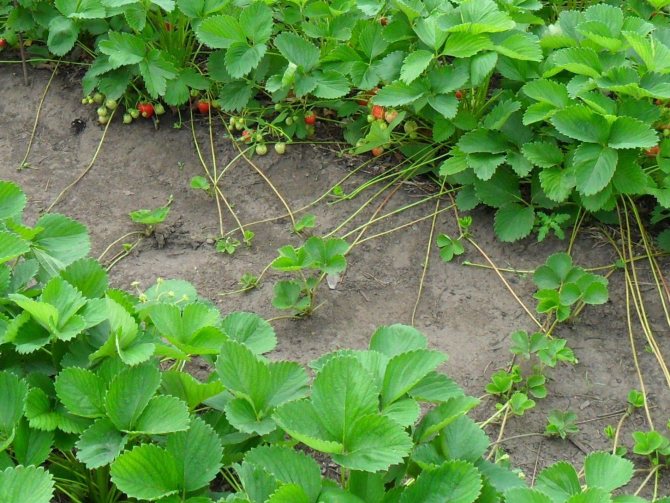

Whisker reproduction is the most efficient method
Seeds
Purchase seeds for germination at a specialty store or garden center, or prepare them yourself. To do this, you must choose the most beautiful, largest and healthiest berry with the characteristic features of the variety.
- Cut off the top part from it with a razor, along with the seeds and put on a sheet of paper to dry the pulp.
- Soak the seeds in warm water for a day.
- Prepare a loose turf, sand and peat substrate. Pour it into a shallow container.
- For germination, strawberry seeds need stratification (imitation of winter).Put a layer of snow on the ground, on which lay the soaked seeds, carefully spreading them with a toothpick. You do not need to fill up the plantings with a substrate. The snow will melt and pull the seeds into the ground.
- Cover the container with the planting material with a transparent lid and send it to the refrigerator for stratification.
- After 10-14 days, remove the bowl with seeds from the refrigerator and place in a warm place.
- Moisten the plantings as the top layer dries. Do not allow the soil to dry completely.
- As soon as the strawberry has two true leaves, remove the lid.
- Divide the seedlings into separate containers. It is very convenient to use peat pots for this purpose. Together with them, you can plant strawberry seedlings in open ground without injuring the delicate root system.
- Plant strawberry seedlings in the garden after the threat of return frost has passed.
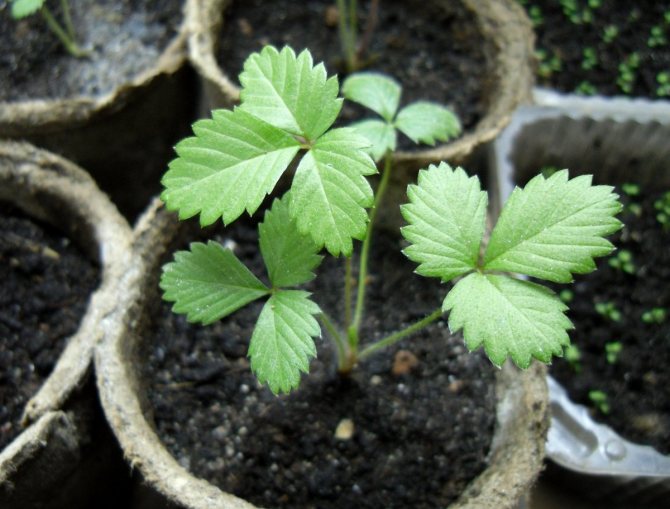

Peat pots are great for growing garden strawberries from seeds
Characteristics of Kimberly Strawberry
Check out these articles as well
- Keeping bees in multihull hives
- Rex Rabbits
- Akhal-Teke horse
- Baikonur grape variety
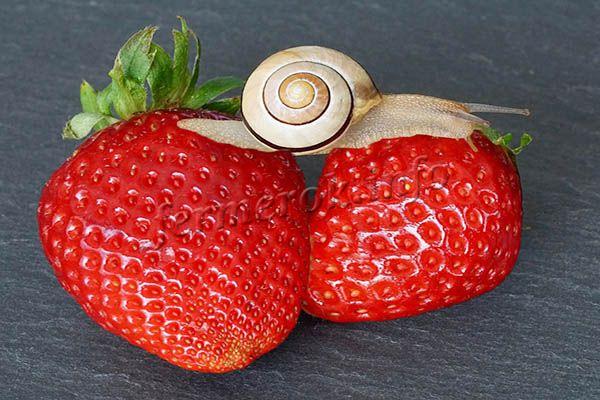

Berries are loved by pests such as wasps, weevils, slugs, and ants.
The characteristics of the Kimberley strawberry cultivar include both advantages and disadvantages.
- Grown in open and closed ground.
- The Kimberly strawberry variety is adapted to a variety of soil types.
- The berries are of commercial quality and can be transported over long distances.
Important!
To prevent strawberries from smearing on the ground, they can be grown on substrates. The bushes are thus above the ground and the berries do not touch the soil.
- Winter hardiness is high.
- The variety is resistant to drought and heat.
- There is a strong immunity to powdery mildew, but gray rot often affects bushes.
- Pests like wasps, weevils, slugs and ants love berries.
- Tasting assessment of Kimberley taste 4.8 points out of 5. The variety is sweet. The level of sugars in the composition is 10%.
- The yield of the Kimberly strawberry variety is 150 c / ha, from a bush it is about 2 kg.
Diseases and pests
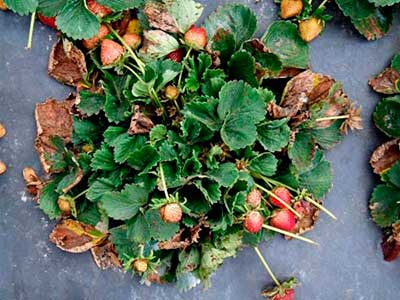

The Kimberly strawberry variety is quite resistant to various diseases. But him can infect nematodes and gray rot.
For their prevention, it is necessary to dig up the soil near the bushes in the fall, remove the affected plant areas, apply top dressing in time, and remove weeds in a timely manner.
If the nematode does appear on the bushes, it is necessary to remove diseased shoots and treat the strawberries with special preparations (for example, one percent Bordeaux liquid or Topaz). You can get rid of gray rot by spraying the bushes with an iodine solution (10 ml per 100 ml of water).
Wreckers attack “Kimberly” with enviable regularity. To save strawberries from them, you can carry out the following procedures:
- remove insects by hand, if possible;
- spray the bushes with dandelion infusion (pour 500 grams into a bucket of warm water, leave for 3 hours);
- or an infusion of several heads of garlic, passed through a garlic press and filled with 3 liters of water (cooking time - 7-10 days).
You can also use special preparations to combat various pests. For example, Fitoverm or Aktellik can help get rid of a strawberry mite. It is recommended to use them according to the instructions.
Check out other varieties of strawberries on our website: Elsanta, Gigantella, Queen Elizabeth, Queen Elizabeth 2, Clery, etc.
How and where to plant strawberries
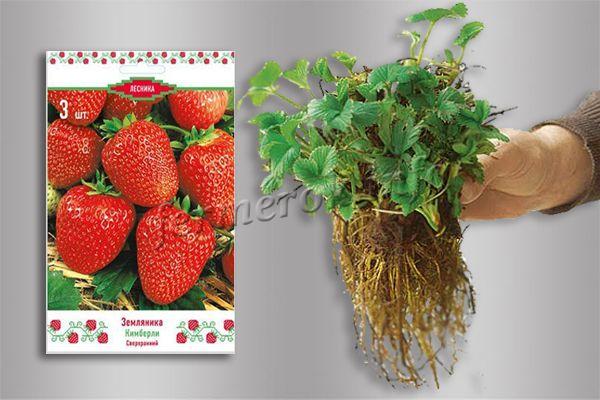

Photo of kimberly strawberry seedlings
The easiest way to propagate a Kimberly strawberry is a mustache. But before planting it, you need to find a good place. It should be bright, sunny, with natural protection from the winds on one side, as well as with a low level of groundwater, so that the roots do not rot.
Interesting!
Kimberley strawberry seedlings are best purchased from a trusted seller or in specialized horticultural farms and stores.
Garlic, mustard, radish, legumes, and parsley are good precursors for strawberries. And after tomatoes, cucumbers and potatoes, planting this crop is not the best option. Saplings are planted in cloudy weather or early in the morning, when it is not hot outside. The distance between the bushes is 35 cm or more. 50-70 cm of free space is left between the rows.
How to choose Kimberly seedlings on the market?
It is worth noting that it is better not to buy strawberry seedlings on the market, and you will not find it especially there. There are special nurseries for this, and that's where it's worth going. You can also contact a familiar farmer who is engaged in breeding it.
When choosing, it is worth looking at the leaves, they should be solid, colorful and healthy, without all kinds of damage. If they begin to fade or shriveled, it is better to refuse to buy a plant, since it is sick. It will be useful to pay attention to the roots if you buy seedlings without containers. They should not be less than 7 cm in height.
Kimberly care
We recommend reading our other articles
- Peach variety Golden Jubilee
- How to dry apples
- Sunflower cake
- Vitamins for chickens
In cultivation, Kimberly strawberries are not difficult, but they also do not allow themselves to be forgotten. Regular care not only allows you to increase yields, but also to achieve beautiful, large berries.
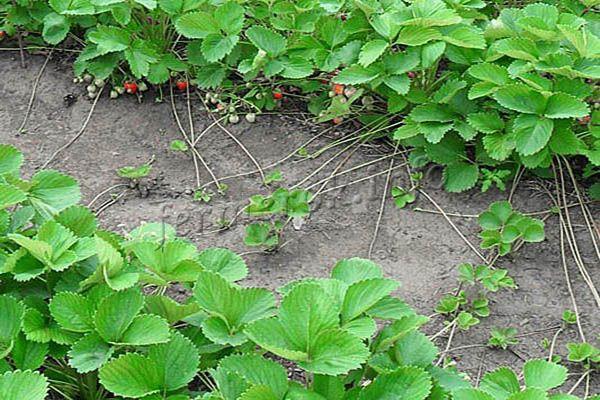

Easiest way to propagate Kimberly strawberries with a mustache
- Weeding the space between the bushes allows you to saturate the plant root system with oxygen. At this time, all weeds are uprooted.
- For pests and diseases, it is recommended to spray strawberries of this variety with special fungicides and insecticides for prevention, but only in early spring and after fruiting. If problems appeared during flowering or ripening of berries, you should use any folk tinctures or similar, safe means.
Interesting!
You can plant garlic between the rows of strawberries. These two cultures grow very well together. Garlic simply grows in the ground, when nothing interferes, the amount of moisture for both crops needs about the same. And the smell of garlic scares away many pests from strawberries.
- Excess whiskers on the bushes must be removed so that they do not interfere with the normal development of the plant. But, if it is necessary to get more planting material, then they remove, not the mustache, but the peduncles. The fewer there are on the bush, the more antennae will appear.
- Lack of water for Kimberley can be a real problem. Strawberries reacts sharply to this, so watering is carried out regularly and abundantly. Most of all water is needed at the beginning of spring, but at this time there is plenty of moisture from the melted snow. But in the summer, during a drought, you need to water the bushes often so that they do not dry out.
- Top dressing is carried out in spring and autumn. You can use mineral fertilizers or organic fertilizers, as long as the fertilizer is freshly prepared.
- Strawberries of the Kimberly variety tolerate the cold well, but it is best to cover it with straw and spruce branches for the winter.
Landing rules and options
The bushes of the Kimberly variety are medium-sized, so when planting, leave 25-30 cm between the plants.
For planting garden strawberries, a well-lit place from all sides is best suited, it should be even or with a slight slope. But the lowlands are not suitable. With excessive dampness, the plant is affected by root rot and blows out in the spring.
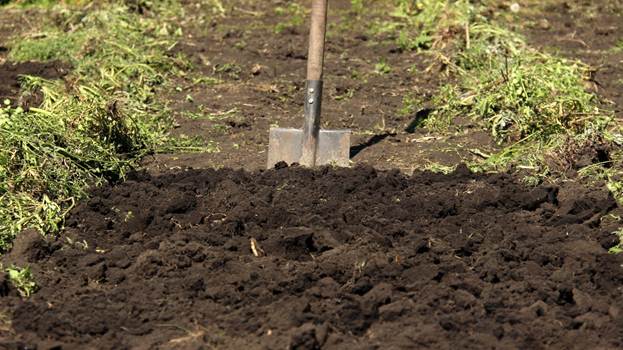

Start preparing the strawberry bed in advance
The Kimberley cultivar requires light but fertile soil. Strawberries grow well on sandy loam or loamy substrates. But in order to get an excellent harvest of sweet berries, it is necessary to improve the quality of the soil. This is done through simple agronomic techniques.
- Start preparing land for strawberry plantation about two weeks before the planned date of planting seedlings in open ground.
- Dig up the ground thoroughly, remove all rhizomes of weeds.
- Add 1 sq. m of a plot of half a bucket of coarse sand, two buckets of rotted manure, 50 g of urea and 1 tbsp. l. wood ash.
- Embed all nutrients in the ground and level the bed with a rake.
Planting time of Kimberley seedlings
The optimal planting dates for the Kimberley variety are May or August. In the first case, the seedlings of garden strawberries take root well and immediately grow, but you should not wait for the harvest in the first year, the plants planted in spring will begin to bear fruit only in the second year.
In order for strawberries to take root well, experienced gardeners recommend that in the year of planting not let them bloom and grow a mustache. Therefore, the first summer it is necessary to remove all peduncles and antennae.
When planting in August, the first berries can be harvested next summer, but you should not hesitate with the landing date. The best time is mid to late August.
Planting methods
Garden strawberries can be planted in open ground in rows, as well as in tunnels with a film cover.
Planting in rows (step by step description)
- Dig a trench about 20 cm deep along the ridge 15 cm from the edge.
- For the second row, dig a similar trench 40 cm from the first.
- Moisten the rows.
- Spread the strawberry seedlings 25–30 cm apart.
- Cover the seedlings with soil, place the plants vertically and carefully straighten the roots.
- When sprinkling a bush with soil, make sure that the heart (growth point) remains at the level of the soil. It should not be too deep or raised.
- Water the plantings liberally with warm water.
- Mulch the soil around the strawberry bushes with humus, dry grass, straw or sawdust.
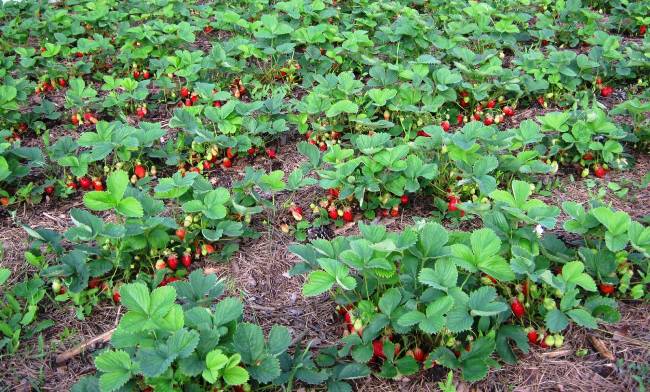

Strawberries planted in rows are very convenient to care for
Growing Kimberley strawberries in tunnels
The peculiarity of the Kimberley variety is the early (usually June) harvest. But the ripening of the berries can be further accelerated and the fruits of excellent taste can be obtained already in May. For this, strawberries are planted in tunnels.
To grow with this method you will need:
- metal or plastic arcs (you can use special designs for cucumber greenhouses);
- polyethylene film.


Growing strawberries in a tunnel accelerates the ripening of berries
Step-by-step description of landing:
- Prepare the beds for planting (as described above).
- Plant the strawberries in rows in August.
- Place arcs along the edges, placing them at a distance of about 0.5-0.7 cm from each other.
- In the spring, as soon as the snow begins to melt, cover the arcs with plastic wrap or agrofiber.
- When the temperature rises, open the greenhouse from the ends.
Harvest
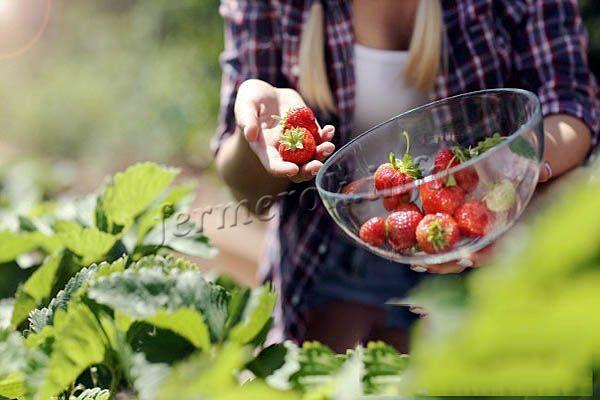

As the berries ripen, they can be gradually harvested.
As the berries ripen, they can be harvested gradually. Usually fruiting is amicable - the berries ripen at once. They are removed in 2-3 stages. It is advisable to collect in dry weather, you can early in the morning when it is not hot. Strawberries that have already been plucked from the bush must be used for processing, transportation, or sent for storage in the refrigerator. Whole, undamaged berry, without loss of taste and appearance, can lie for about a week.
Kimberley strawberry for universal use. It can and even be recommended to be eaten fresh, but it can also be used for processing (preserves, jams, compotes). Freezing and drying are also possible.
Breeding history of the variety
The homeland of Vima Kimberly is the Netherlands. The crop was bred by Vissers by crossing Gorella (large early ripening strawberries) and Chandler (large and sweet American selection). She inherited large fruits, pleasant taste and frost resistance from her “progenitors”.
It would be more correct to call this plant a strawberry, but among the people and in professional nurseries it is often called a strawberry.
The variety is well known in Europe and the USA, and is actively used for growing on an industrial scale. In Russia, it was accepted for official variety testing in 2008, and approved in the State Register only in 2013. According to an official source, it is zoned for the Central and Central Black Earth Region.
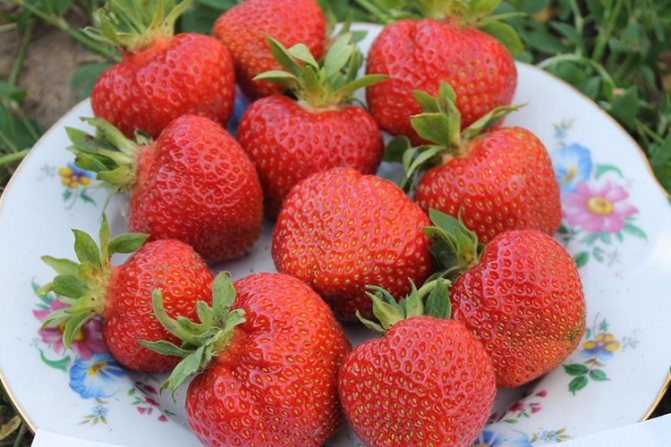

As the experience of gardeners shows, the variety is picky about weather conditions and shows good results only in the indicated regions. In more northern latitudes, the berries are not warmed up enough by the sun and do not become bright and sweet. In the southern regions, culture is also poorly developed and does not correspond to the characteristics indicated in the description.
Reviews of the Kimberly strawberry variety
Experienced and novice gardeners often prefer the Kimberly strawberry variety. You can read about their cultivation experience below.
- Leonid Korneev: “The Kimberly variety showed itself excellently in the first 3 years of cultivation. This year, three-year-old bushes have produced a little crop, but we have planted new ones, so we can expect a big harvest next year. I like this variety because it rarely gets sick, in any case, we haven’t come across any diseases yet - only slugs, but they are easy to remove with any insecticide, the main thing is to carry out the treatment before the berries appear ”.
- Albina Tsareva: “Kimberly is good not only fresh but also preserved. As an experienced cook, I can say that the jam is excellent. The berries do not fall apart, retain some of the taste after boiling. They look beautiful in jars. Compotes and jam are also delicious. True, you always have to tinker with jam, removing the bones. But the work pays for itself! "
- Maria Selezneva: “Kimberly strawberries are good, but seedlings should be bought with caution - there are often cross-pollinated ones, which are of little use. I grow it for sale - it is sold out quickly. The berries are of commercial quality, very beautiful, bright, shiny, and they also have a strong aroma, so they do not linger on the counter. "
Testimonials
I heard that in the south, Kimberley is very worried, I myself live in Sestroretsk - Len. region, for us the grade is the most. The berry is tasty and aromatic, the bushes do not get sick, they tolerate thaws well. We have practically no snow in winter, so I cover the bushes with non-woven material. As a result, the foliage does not grow out, starts early and gives a good harvest.
It is profitable to grow Wim Kimberly strawberries both for personal consumption and for commercial purposes. This berry contains all the best qualities of the strawberry crop: excellent taste, high yield, large-fruited and transportability. This variety is worth paying attention to.
A guide for summer residents: care, watering and feeding
If all the necessary conditions were met when planting seedlings, then the next year garden strawberries will delight gardeners with the first harvest. Despite Kimberly's unpretentiousness, the plants need regular watering.
Table: irrigation scheme
| Application period | Periodicity | Volumes |
| After landing | Every day for a week | 3 liters of water per 1 m2 |
| Flowering period | 2 times a week in cool weather and 3-4 times a week when hot | 15-20 liters of water per 1 m2 |
| Fruiting period | 2 times per week | 1315 l of water per 1 m2 |
But at the same time, severe waterlogging will bring harm, so you need to start watering only when the earth is really dry and crumbles in your hands.
Due to frequent watering, the weeds around the bushes also begin to grow actively, therefore, in order to save time for weeding, it is recommended to mulch the soil with sawdust or straw. The land hidden in the aisles will not dry out, the number of weeds will noticeably decrease, and the fruits will remain clean.
An important factor for a full harvest is the timely fertilization of garden strawberries.
Table: spring feeding
| The age of the bushes | Application period | Fertilizer type and proportions | number |
| Young bushes | April May | Spread manure or chicken droppings gently under the bushes. Cover the top with a layer of soil (2-3 cm). | 1 l under a bush |
| Solution: water - 10 l, bird droppings - 0.5 l, sodium sulfate - a tablespoon. | |||
| Mature bushes | first 3 sheets | Water - 10 liters, ammonium sulfate - 1 tablespoon, 0.5 liters of mullein. | 1 l under a bush |
| flowering period | Water - 10 liters, nitrophoska - 2 tablespoons, potassium - a tablespoon. | 0.5 l for a bush | |
| fruit formation | Weed infusion: infuse chopped weeds with water for a week | 1 l under a bush |
In the spring, during flowering and the appearance of the first ovaries, you can also carry out foliar feeding of garden strawberries. For this, a 0.4% urea solution is used (water - 10 l, urea - 40 g). A solution of borax also has a good effect on plants: water - 10 l, borax - 10 g. Foliar dressing increases the yield of bushes by 15–20%. During spraying, make sure that the leaves are moistened on both sides. Particular attention must be paid to the lower part of the leaves, since it is this that absorbs more fertilizers.
Table: autumn fertilizers
| Application period | Fertilizer type | Proportions | Watering rules |
| Mid August-September | organic fertilizers |
| water between the rows without falling on the leaves |
| mineral fertilizers |
| water aisles of 1 liter under a bush |
Half an hour before fertilizing, you need to spill the bushes well under the root with water, while the leaves and hearts of the plant cannot be wetted.
Video: feeding garden strawberries
Advantages and disadvantages
The Kimberley variety is often used for domestic and commercial cultivation. It attracts gardeners with the following benefits:
- excellent taste;
- early maturation;
- large-fruited;
- the power of the bush;
- strong immunity;
- high (for this culture) winter hardiness;
- good transportability.
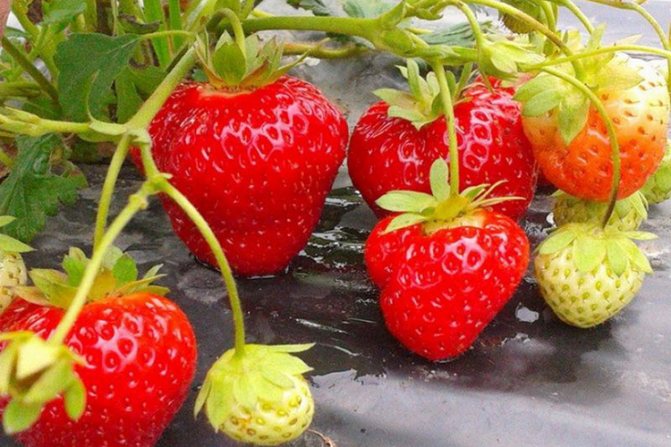

The disadvantages include:
- demanding for warmth (in cold summer conditions, the berries do not ripen and their taste does not fully unfold);
- the need for abundant watering and intensive feeding;
- ripening of fruits does not occur simultaneously;
- in the northern regions it can take a long time to recover after winter;
- does not take root well in hot regions.
Pros and cons of the variety
Kimberly's garden strawberry has practically no drawbacks, and among the advantages it is worth highlighting:
- very early ripening period;
- one-dimensionality and large size of fruits;
- high productivity;
- good resistance of the variety to diseases (fungal, powdery mildew);
- high winter hardiness.
The disadvantages with a big stretch include the type of fruiting of the variety - non-repairable.
The unpretentiousness of garden strawberries and all of the above advantages make Kimberly an ideal plant for gardeners.
Yield
The first high-quality crop can be harvested 2-3 years after planting the seedlings. The yield is regular and abundant - 1-1.5 kg can be obtained from one bush. And with proper care and favorable weather conditions - up to 2 kg of berries. Fruiting lasts 15-20 days and occurs once a year.
To increase yields, you should regularly thin out the mustache.
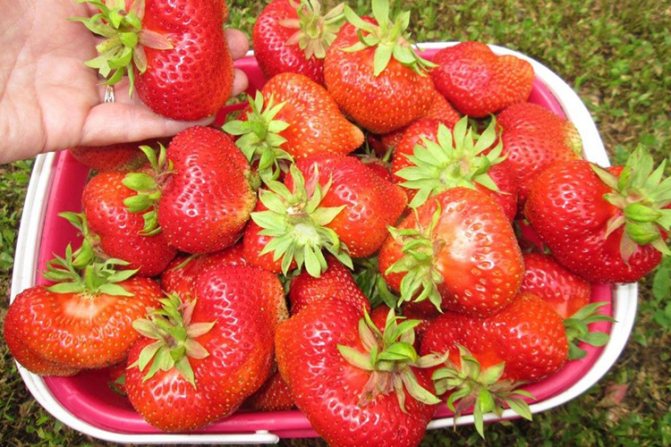

How to grow Kimberly
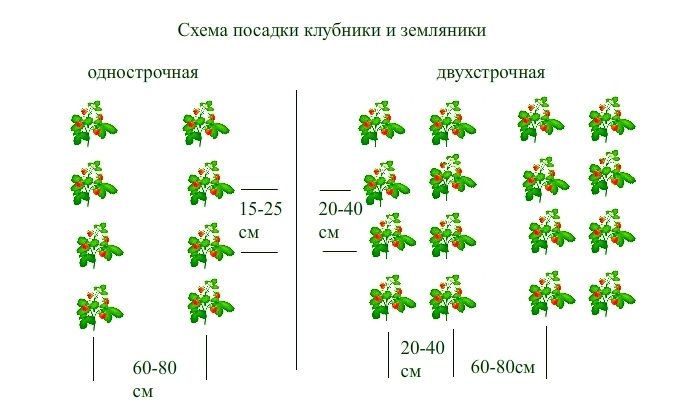

It is better to plant Kimberly in two-line rows. Photo: i.
You can root Kimberly seedlings in the beds:
- in the spring - at the beginning of May;
- in autumn - in the first decade of September.
The second option is preferable, since in this case the seedlings will have time to settle down in a new place before the cold weather and get stronger. Already next season, it will be possible to harvest the first crop from the bushes.
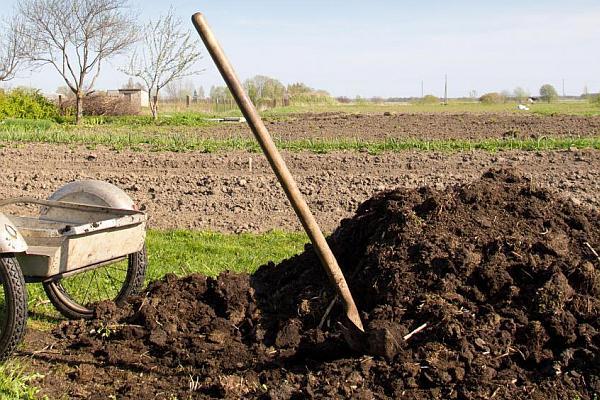

Humus will serve as a good fertilizer for the soil. Photo: gorjeanul.ro
For a strawberry plantation, a sunny place with a fertile and not waterlogged soil is chosen. When the soil consists of loam, it is dug up with the addition of sandy loam and peat. At the same time, the poor soil is fertilized with a mixture of humus, furnace ash and granulated ammonium nitrate.
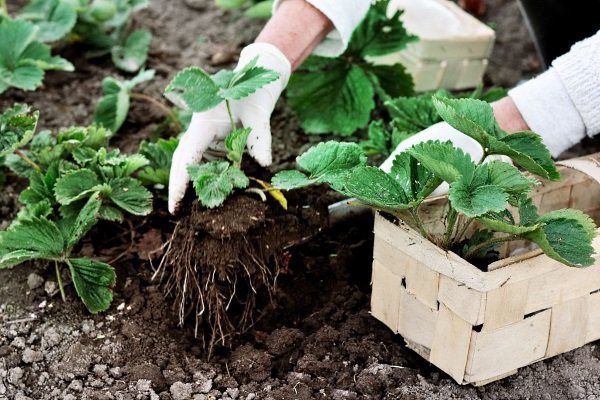

Strawberry seedlings are rooted in pre-dug holes. Photo: ferma.expert
Seedlings take root in holes pre-dug before planting. Their depth and width should be 20 cm.
Strawberry planting scheme:
- when rooting seedlings in double rows, the step between the bushes is 25 cm between the bushes;
- with a staggered arrangement, the distance between plants is 30 cm.
Immediately after planting, the strawberry sprouts are watered abundantly. One plant should have 3 liters of water.
Video about growing strawberries:
Description of plants
The Kimbrely variety was developed in the Netherlands not so long ago. The breeders crossed two other, also good, varieties - Gorella and Chandler. As a result of these works, a wonderful variety of berries with early ripening was obtained.
The bushes of this variety do not look very decorative. Shoots are quite powerful, strong, as if slightly pressed to the ground. They are covered with small rounded leaves - their number is not very large, much less than the average for strawberries. At the same time, they are covered with a barely noticeable film that creates an oily sheen.
The flower stalks on Kimbrell bushes are usually slightly lower or even at the same level with the leaves. They, like the shoots, are strong and strong, due to which they can hold rather heavy and large berries.
This is a big plus during harvesting - at this time, strawberries of other varieties often tend to twigs to the ground and the berries simply rot before they can be harvested.
Like any strawberry, the Kimbrely variety has a mustache that must be removed constantly. They do not grow very quickly, so this procedure is usually not a hassle.
Kimberly, when properly cared for, is a very productive variety. If you take proper care of your bushes, you can count on harvests throughout the season.
